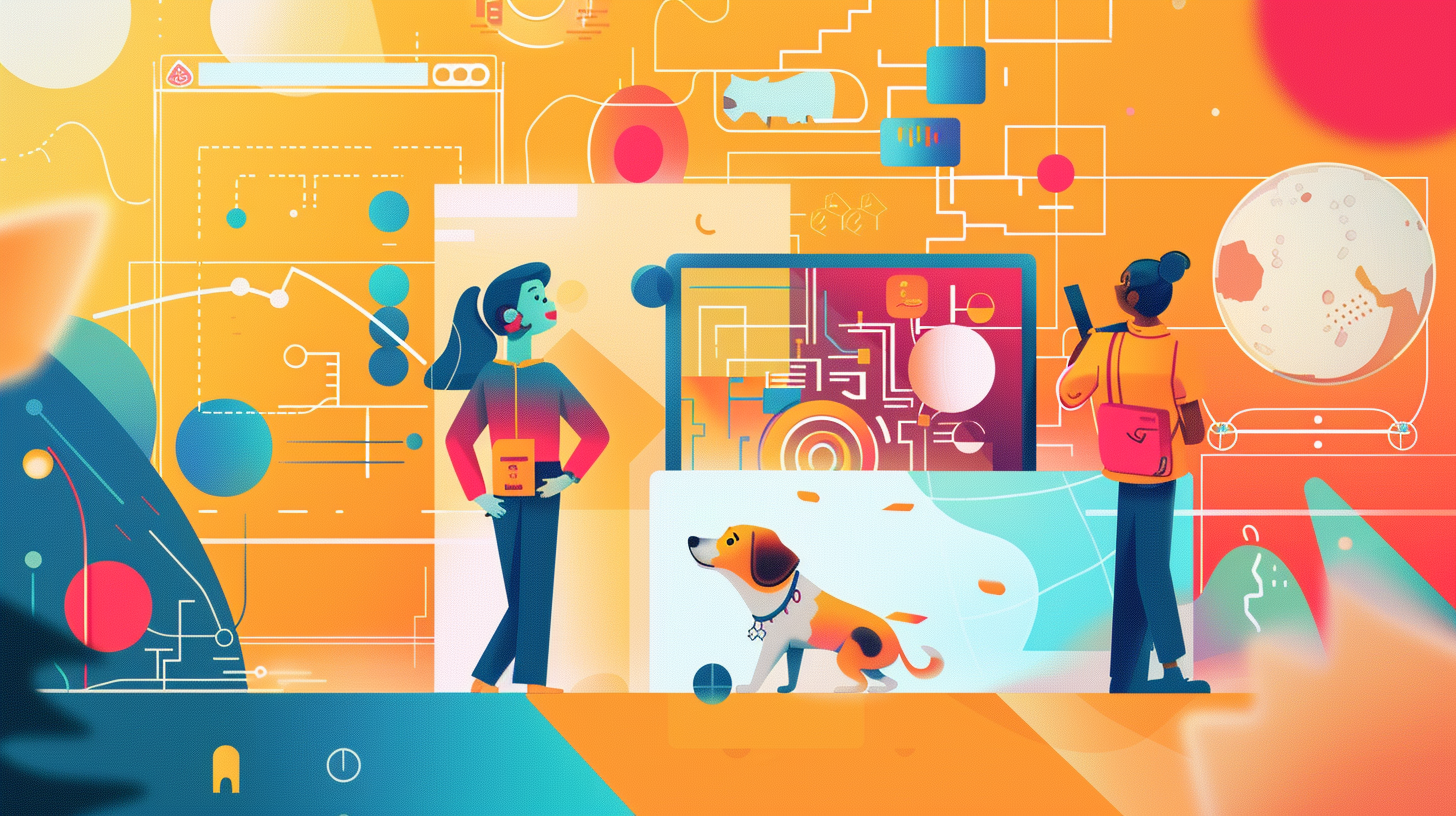
In digital marketing, where artificial intelligence (AI) is rapidly transforming content creation, it's natural to question the role of human editors. AI's ability to generate vast amounts of content in mere seconds is undeniably valuable for businesses seeking to optimize content production. However, despite AI's impressive capabilities, the human touch remains crucial in ensuring the quality and engagement of the content produced. Let's explore why human editors are still indispensable in the age of AI-generated content and how their collaboration with AI can yield content that captivates readers and drives business success.
AI-generated content relies on sophisticated machine learning algorithms that analyze and process extensive datasets to produce written material. AI can tackle various topics, from news articles and product descriptions to emails and social media posts. The process involves feeding the AI model with relevant data, such as existing content, customer feedback, and search trends, which it then uses to generate new content.
There are numerous advantages of AI-generated content over traditional methods. First, it can produce a substantial content volume rapidly and efficiently, allowing human resources to focus on other critical tasks. Second, AI-generated content is highly customizable, enabling businesses to tailor it to specific target audiences and marketing objectives.
Despite its many benefits, AI-generated content is not without its limitations. One significant drawback is its potential lack of nuance and creativity compared to human-written content. AI models may struggle to grasp the intricacies of language and tone, resulting in overly formal or robotic content.
Moreover, AI-generated content may lack the human perspective necessary to resonate with readers on an emotional level. While AI can analyze data and identify trends, it may not fully comprehend the emotional and cultural context behind the content it produces. This can lead to tone-deaf or insensitive content that fails to connect with the intended audience.
This is where human editors shine, ensuring that AI-generated content meets the highest standards of quality and engagement. Unlike AI, human editors bring a nuanced understanding of language, tone, and the human perspective to the content creation. They can identify gaps in the content and propose improvements to enhance its relevance and value to readers.
Human editors also play a crucial role in aligning the content with the brand's voice and messaging. While AI-generated content can be highly customizable, it may still lack the personal touch that human editors provide. By collaborating with AI, human editors ensure the content is consistent with the brand's values and messaging, resonating with its target audience.
The true potential of AI-generated content is unlocked when combined with human editors' expertise. By leveraging AI's speed and scalability alongside human editors' creativity and nuance, businesses can produce content that is both efficient and effective, tailored to their target audience, and aligned with their marketing goals.
This collaboration allows businesses to produce content at scale without compromising quality. AI can swiftly generate a large volume of content, while human editors provide oversight and guidance to ensure the content is engaging and valuable to readers.
Furthermore, the synergy between AI and human editors enables businesses to create more relevant and valuable content for their target audience. AI can analyze data and identify trends, while human editors provide a human perspective and ensure that the content resonates with the needs and preferences of its intended readers.
The Guardian reported on the Washington Post's employment of Heliograf, an AI-based technology that has smoothed the collaboration between AI and human news editors. Heliograf's unique function is to generate news stories in real time, which allows human reporters to concentrate more on comprehensive reporting and in-depth analysis. The Guardian, "How artificial intelligence is changing writing," March 25, 2021.
Forbes published an article highlighting Grammarly's use of artificial intelligence. Grammarly is a tool designed to enhance writing skills and detect grammar errors. While Grammarly is primarily an AI-based tool, it does involve human editors in the process to ensure the accuracy and relevancy of its provided suggestions. Forbes, "How Grammarly Quietly Grew Its Way To 6.9 Million Daily Users In 9 Years," December 16, 2017.
Businesses must find the right balance between AI and human input to produce content that is both efficient and effective. One approach is to use AI to generate a first draft of the content and then have human editors review and revise it as needed. This method allows businesses to produce content quickly while ensuring quality and engagement.
Alternatively, businesses can use AI to identify trends and topics relevant to the target audience and then have human editors create content based on this analysis. This approach helps businesses produce content that is more valuable to their target audience while still benefiting from AI's speed and scalability.
As AI advances, human editors' role in the content creation process will likely evolve. While AI can generate a large volume of content quickly, human editors will remain essential in providing oversight and guidance to ensure the content is high quality and engaging for readers.
AI and human editors may work more closely together to produce even more efficient and compelling content. For instance, AI could generate content based on real-time data and reader feedback, while human editors provide oversight and guidance to ensure alignment with the brand's values and messaging.
Ultimately, the key to success lies in finding the right balance between AI and human input, leveraging both strengths to produce content that resonates with readers and achieves business goals. By embracing the power of AI while recognizing the irreplaceable value of the human touch, businesses can confidently navigate the future of content creation.
FAQs:
Q: Can AI completely replace human editors in content creation?
A: While AI can generate content quickly and efficiently, human editors remain essential for providing a human perspective, ensuring quality, and aligning content with brand values.
Q: How can businesses find the right balance between AI and human input in content creation?
A: Businesses can use AI to generate first drafts or identify relevant topics and then have human editors review, revise, and create content based on these insights.
Q: What are some real-world examples of successful AI-human editor collaborations?
A: The Washington Post's use of Heliograf and Grammarly's combination of AI and human editors are notable examples of successful collaborations.
Q: How can businesses ensure that AI-generated content resonates with their target audience?
A: By having human editors provide oversight and guidance, businesses can ensure that AI-generated content aligns with their brand's values and messaging and resonates with their target audience.
Q: How can Content Basis help businesses navigate the future of content creation?
A: Content Basis offers a comprehensive solution that combines AI's power with human editors' expertise, helping businesses produce high-quality, engaging content that drives results. Contact Content Basis today to learn more about how we can help your business thrive in the age of AI-generated content.

My introduction to video games was a single bouncing pixel called Pong that my dad bought in an attempt ...

Let's say I am no longer in my 20s and may have been around the block a few times. I remember writing so...

The Rise of Spryker: A New Leader in Digital Commerce Spryker has entered the digital commerce world, ea...